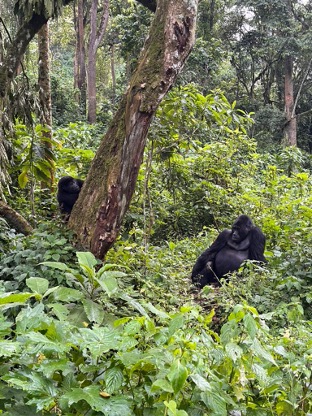The astounding toll of the pandemic is a reminder of why we must urgently leverage lessons learned from COVID-19 to avert or better respond to the next pandemic threat. However, the pandemic is not the only health crisis from which we can draw lessons and inform strategies for future epidemic and pandemic preparedness. Communities worldwide regularly face outbreaks of diseases caused by pathogens other than coronaviruses. While working to control outbreaks as quickly as possible, outbreak investigators also use these health events as opportunities to learn more about the epidemiology of diseases, as well as the impact of behavioral and ecological drivers of outbreaks, including climate change, deforestation, or globalization.
My doctoral research is based on the idea that outbreaks also serve as an opportunity to learn how we can improve the speed with which we detect and respond to outbreaks. Speed is crucial during an outbreak because the faster we respond, the greater a window of control we have to prevent unnecessary morbidity and mortality both among humans and animals.

threats, including zoonotic diseases such as COVID-19, to mountain
gorillas in Uganda’s Bwindi Impenetrable Forest National Park.
To learn how we can respond more quickly, I have been collaborating with experts in outbreak response in Uganda, a country well versed in outbreaks. This year alone, the Ministry of Health in Uganda has responded to outbreaks of anthrax, Rift Valley fever, yellow fever, and an undiagnosed illness that has caused several deaths. Many of the diseases Uganda contends with are zoonotic, meaning they are transmissible between humans and animals and vice versa. Climate change has further exacerbated these disease threats in recent years. For example, when intense rains prompt landslides, anthrax spores that may have been dormant in the soil can surface and be ingested by grazing animals, prompting an outbreak. If the infected animal is slaughtered and the meat distributed for consumption, this can in turn cause an outbreak of cutaneous or gastrointestinal anthrax in humans.
To address such complex disease challenges, experts worldwide have called for a multi-sectoral and transdisciplinary One Health approach, which recognizes the interdependent connection between humans, animals, plants, and our shared environment. Our research is focused on disease outbreaks that involve two or more of the One Health sectors, necessitating a coordinated response.
To study how quickly we respond to these outbreaks and identify areas for improvement, I am working with interdisciplinary teams in Uganda to analyze key dates of outbreak milestones, or events, that have occurred during past outbreaks, many of them zoonotic. For example, all outbreaks have a date on which they are first detected – often the date that symptom onset was observed in humans or animals. Other examples of milestones include the date that relevant authorities are notified of the outbreak and the date the outbreak is confirmed by diagnostic test. In total, there are 11 milestones I am tracking, defined by experts from around the globe during the 2019 Salzburg Global Seminar: Finding Outbreaks Faster: Metrics for One Health Surveillance. Using dates from these outbreak milestones, experts have proposed calculating “One Health timeliness metrics” for epidemic preparedness, which is defined as the time interval between two milestones. Using regression analyses, we can then assess rates of change in timeliness metrics to see if our response times have improved, remained constant, or worsened over the past decade.
This proposed research assumes that it is possible to track milestone dates from outbreaks that have occurred in Uganda. But because no such database exists yet, I have been working with collaborators and mentors at UC Davis and UCSF and in Uganda to build a repository of data on all outbreaks that Uganda’s Ministry of Health Public Health Emergency Operations Center has responded to since it was established in 2013. My time in Uganda has granted me the opportunity to learn about the intricacies of the health information system in Uganda. It is my hope that the database and timeliness metrics analyses will provide a lasting opportunity for policy change in Uganda and in other settings as well.